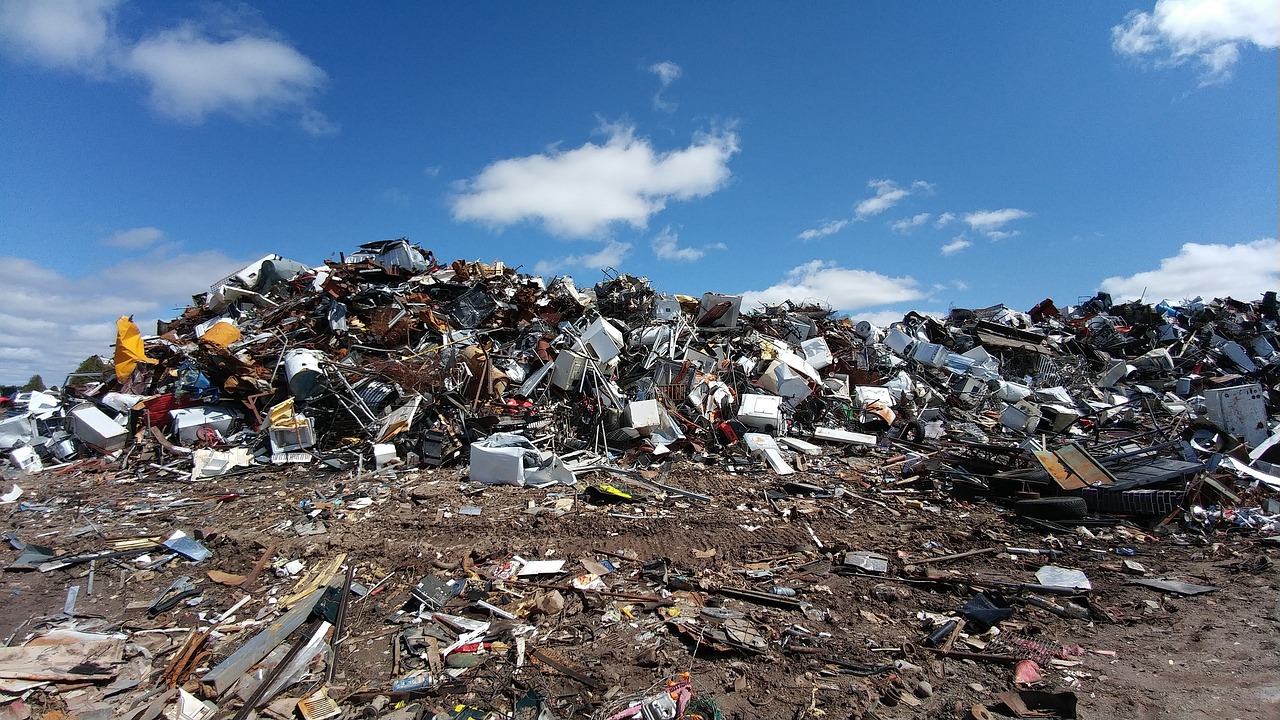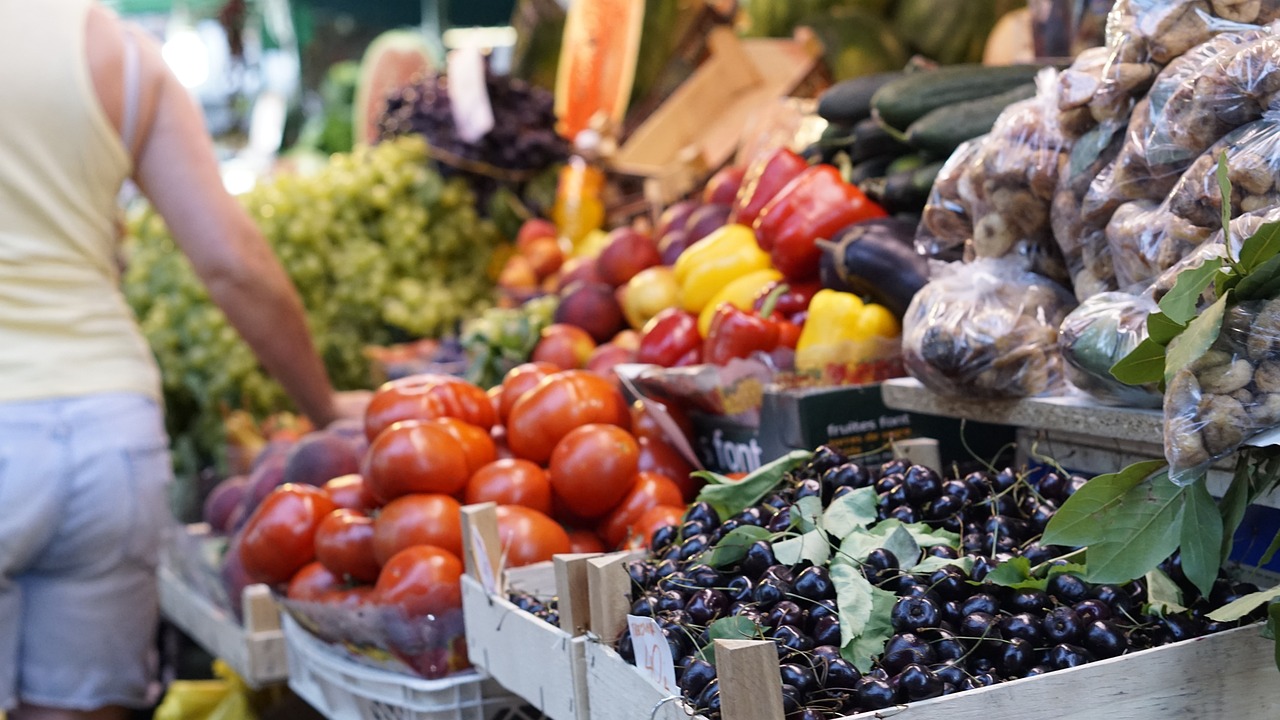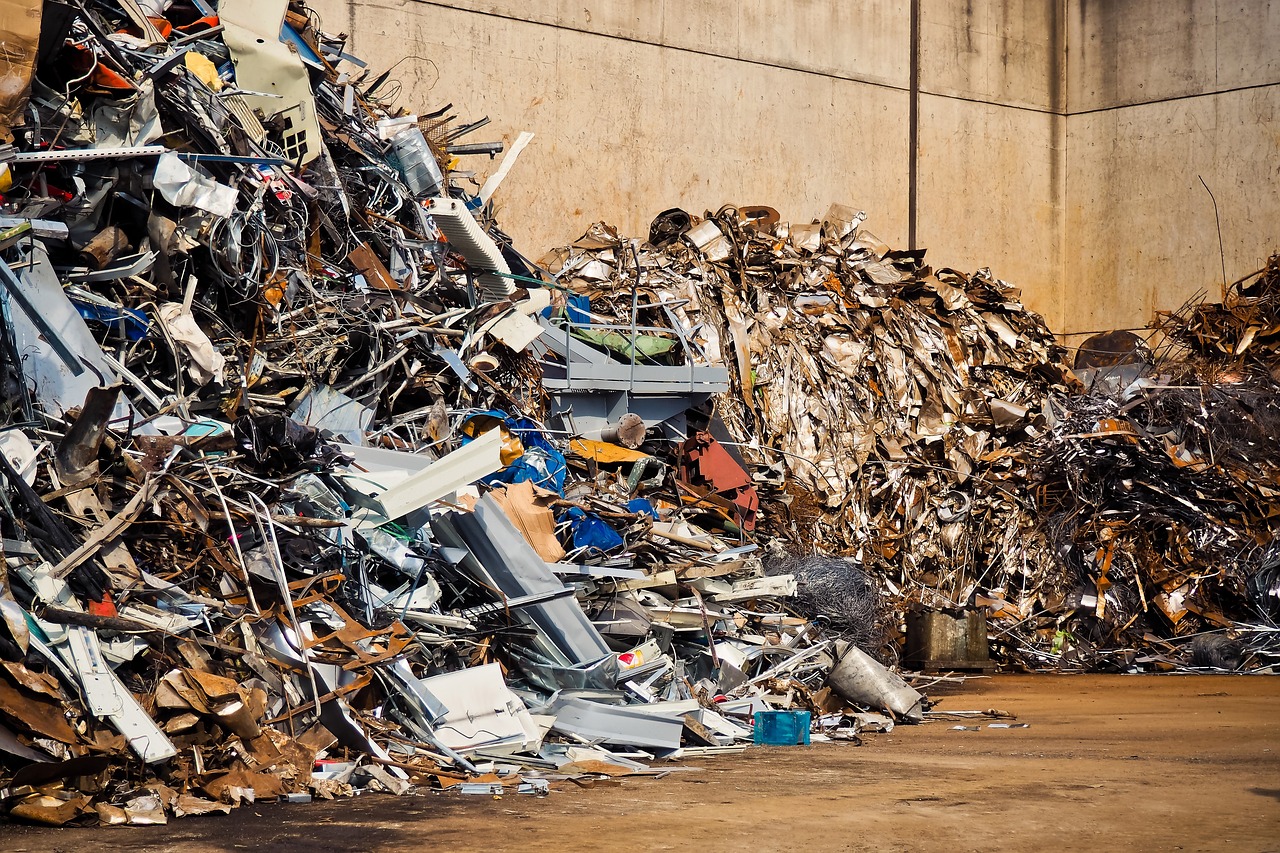How to Implement Sustainable Waste Management in Your Daily Life
In today's fast-paced world, the concept of sustainable waste management is more critical than ever. With the increasing amount of waste generated daily, it's essential to adopt practices that not only minimize our environmental footprint but also promote a healthier planet. But how do we integrate these practices into our daily routines? The answer lies in making small yet impactful changes that can lead to significant results over time. By understanding the principles of waste management and actively participating in sustainable practices, we can contribute to a cleaner and greener environment.
Waste management is not just about throwing things away; it's a comprehensive approach to handling waste from its inception to its final disposal. This process includes various stages such as collection, transportation, treatment, and disposal of waste. Understanding these principles is crucial because it highlights the importance of reducing waste at the source. Did you know that improper waste disposal can lead to pollution, health hazards, and even climate change? By recognizing the impact of waste on our environment, we can better appreciate the need for sustainable practices.
One of the most effective ways to implement sustainable waste management is to start at home. Our households are often the biggest contributors to waste, but with a few simple changes, we can significantly reduce our output. For instance, consider your shopping habits—are you opting for products with excessive packaging? By choosing items with minimal or recyclable packaging, you can help cut down on waste before it even enters your home. Additionally, think about your food consumption. Planning meals and using leftovers creatively can prevent food waste, which is a significant part of household waste.
One of the most rewarding practices you can adopt is composting. Composting organic materials like food scraps and yard waste not only reduces landfill waste but also enriches your garden soil. Imagine turning your kitchen scraps into nutrient-rich compost that can help your plants thrive! This practice is not only beneficial for your garden but also contributes to reducing greenhouse gas emissions from landfills. If you're new to composting, don't worry; it's simpler than you think!
There are various composting methods available, and finding one that suits your lifestyle is essential. Here are a few options:
- Traditional Compost Bins: These are great for those with outdoor space. They allow for larger amounts of waste and can be turned to aerate the compost.
- Vermicomposting: If space is limited, consider using worms to break down food scraps. This method is efficient and can be done indoors.
- Bokashi: A fermentation method that can handle all types of food waste, including meat and dairy, which traditional composting cannot.
To ensure your compost pile thrives, it's crucial to maintain it properly. Key factors include:
- Aeration: Regularly turning your compost helps to introduce oxygen, which is essential for decomposition.
- Moisture Levels: Your compost should be damp but not soggy. Think of it like a wrung-out sponge.
- Balancing Green and Brown Materials: A good mix of nitrogen-rich greens (like fruit scraps) and carbon-rich browns (like dry leaves) is vital for effective composting.
Recycling is another crucial aspect of waste management. However, it's important to recycle correctly to ensure materials are processed efficiently. Many people are unaware of what can and cannot be recycled, leading to contamination of recyclable materials. For instance, always rinse out food containers before placing them in the recycling bin. Familiarize yourself with your local recycling guidelines, as they can vary significantly. By being diligent about recycling, you can help divert a considerable amount of waste from landfills.
Single-use plastics are a significant environmental concern, contributing to pollution and harming wildlife. To combat this issue, we can make conscious choices in our daily lives. Start by examining your habits: do you frequently grab a plastic water bottle or use plastic bags for shopping? By replacing these items with reusable alternatives, you can significantly reduce your plastic footprint.
Investing in reusable products is an excellent way to contribute to sustainability. Consider these alternatives:
- Reusable Water Bottles: A simple switch that can save countless plastic bottles from ending up in landfills.
- Shopping Bags: Bring your own bags to the store, which can drastically reduce plastic waste.
- Food Containers: Use glass or stainless steel containers for leftovers instead of plastic wrap.
Finally, advocacy plays a vital role in promoting sustainable waste management. By supporting policies that encourage recycling and waste reduction, you can help drive significant change in your community. Get involved with local environmental groups, attend town hall meetings, and raise awareness about waste issues. When communities come together, they can create a powerful movement towards sustainability.
Q: What is the most effective way to reduce waste at home?
A: Start by evaluating your shopping habits and meal planning. Opt for products with minimal packaging and utilize leftovers creatively.
Q: Can I compost in an apartment?
A: Absolutely! Vermicomposting is a great option for apartment dwellers and can be done indoors.
Q: How do I know what can be recycled?
A: Check with your local recycling program for guidelines, as they can vary by location. Generally, rinse containers and avoid mixing different materials.
Q: Why should I care about reducing single-use plastics?
A: Single-use plastics contribute to pollution and harm wildlife. By reducing your use, you help protect the environment and promote sustainability.

Understanding Waste Management
Waste management is not just a buzzword; it’s a vital practice that affects our environment and our health. Imagine living in a world where trash is piled high, polluting our landscapes and waterways. That’s the reality we face if we don’t take waste management seriously. But what does waste management really entail? At its core, waste management is the process of collecting, transporting, processing, and disposing of waste materials in a way that minimizes their impact on the environment. It’s about making conscious decisions that can lead to a cleaner, healthier planet.
Understanding the importance of waste management is crucial for everyone. Did you know that the average person generates around 4.5 pounds of waste each day? That’s a staggering amount! The impact of this waste can be devastating, leading to pollution, greenhouse gas emissions, and the depletion of natural resources. By effectively managing waste, we can:
- Reduce landfill overflow
- Conserve natural resources
- Decrease pollution
- Promote recycling and reuse
Moreover, waste management is not just about disposal; it’s about the entire lifecycle of a product—from production to consumption to disposal. This means being mindful of what we buy, how we use it, and what happens to it once we’re done. For instance, when we choose products with minimal packaging or those made from recycled materials, we’re making a positive impact.
In addition to individual actions, waste management also encompasses community efforts and policies. Local governments play a significant role by implementing regulations and programs aimed at reducing waste. These initiatives can include curbside recycling, composting programs, and public awareness campaigns. When communities come together to support these efforts, the impact can be profound.
In summary, understanding waste management is about recognizing our role in the larger picture. It’s about taking small, intentional steps that can lead to significant changes. Whether it’s reducing our own waste or advocating for better policies, every action counts. So, let’s dive deeper into practical strategies for reducing waste in our daily lives!
Q: What is the most effective way to reduce waste at home?
A: The most effective way to reduce waste at home is to start with the three R's: Reduce, Reuse, and Recycle. By minimizing what you buy, finding new uses for items, and recycling properly, you can significantly cut down on your waste.
Q: How can I encourage my community to adopt better waste management practices?
A: You can advocate for community programs, participate in local clean-up events, and educate others about the importance of waste management. Engaging in discussions at community meetings can also help drive change.
Q: Are there any apps that can help with waste management?
A: Yes, there are several apps designed to help individuals track their waste, find recycling locations, and learn about composting. Some popular ones include "iRecycle" and "Compost Now."

Reducing Waste at Home
Reducing waste at home is not just a trend; it's a lifestyle choice that can lead to a **significant positive impact** on our environment. By making small, conscious changes in our daily routines, we can contribute to a healthier planet. Think about it: every time you choose to reuse, recycle, or refuse single-use items, you're not just decluttering your space; you're also championing a cause that benefits all of us. It's like planting seeds of sustainability that can grow into a forest of change.
One of the easiest ways to start reducing waste is to **assess your consumption habits**. Take a moment to look around your home. How many items do you have that you rarely use? From kitchen gadgets to clothing, many of us accumulate things we don't really need. By decluttering, you not only create a more organized space but also make room for more sustainable choices. Consider donating items you no longer use; this not only reduces waste but also helps someone else in need.
Another effective strategy is to **practice mindful shopping**. Before you buy, ask yourself if you truly need the item. This simple question can help curb impulse purchases that often lead to waste. When shopping, opt for products that come in eco-friendly packaging or are made from sustainable materials. It's like choosing to invest in the future rather than just satisfying a temporary desire. Additionally, consider buying in bulk to reduce packaging waste. Not only does this save money, but it also minimizes the number of containers that end up in your trash.
To further enhance your waste reduction efforts, let's talk about **food waste**. Did you know that a significant portion of household waste comes from food? To combat this, start by planning your meals and creating a shopping list before heading to the grocery store. This helps prevent overbuying and ensures you only purchase what you need. If you find yourself with leftovers, don't let them gather dust in the fridge. Instead, get creative with your meals or freeze them for later. This way, you're not only saving money but also reducing the amount of food that goes to waste.
Now, let's dive into one of the most rewarding practices: **composting**. Composting organic waste like fruit peels, vegetable scraps, and yard debris not only reduces the amount of waste sent to landfills but also enriches your garden soil. Imagine turning your kitchen scraps into nutrient-rich compost that helps your plants thrive! It's a win-win situation. By composting, you’re not just reducing waste; you’re also contributing to a more sustainable ecosystem right in your backyard.
Composting is a fantastic way to transform organic waste into something beneficial. You might be wondering how to get started. The good news is that there are several methods available to suit your lifestyle. Whether you choose a traditional compost bin, vermicomposting with worms, or the bokashi method, each option has its own set of advantages. For instance, vermicomposting is perfect for those with limited outdoor space, while bokashi allows for faster decomposition.
When deciding on a composting method, consider your available space and the amount of organic waste you typically produce. Here's a quick overview of some popular methods:
| Composting Method | Best For | Pros |
|---|---|---|
| Traditional Compost Bin | Backyards | Large capacity, great for yard waste |
| Vermicomposting | Apartments | Space-efficient, fast decomposition |
| Bokashi | All spaces | Quick fermentation, can compost meat and dairy |
Once you've chosen a method, maintaining your compost is crucial for effective decomposition. Regularly aerating your compost pile, ensuring the right moisture levels, and balancing green (nitrogen-rich) and brown (carbon-rich) materials are key practices. Think of your compost as a living organism that needs care and attention to thrive!
In conclusion, reducing waste at home is an achievable goal that requires a little effort and creativity. By adopting these practices, you're not just making your home more sustainable; you're also inspiring others to follow suit. Remember, every small step counts in the journey toward a more sustainable future.
Q: What is the easiest way to start reducing waste at home?
A: Start by assessing your consumption habits and decluttering items you no longer use. This can create more space for sustainable choices.
Q: How can I reduce food waste effectively?
A: Plan your meals and create a shopping list to avoid overbuying, and get creative with leftovers or freeze them for later use.
Q: What composting method is best for small apartments?
A: Vermicomposting is ideal for small spaces as it requires minimal space and can be done indoors.

Composting Organic Waste
Composting organic waste is one of the most rewarding practices you can adopt in your journey towards sustainable living. It's like giving back to the earth, transforming your kitchen scraps and yard waste into nutrient-rich compost that can enhance your garden's health. Imagine turning what would typically end up in a landfill into a natural fertilizer that nourishes your plants! Not only does composting significantly reduce the amount of waste you contribute to landfills, but it also helps mitigate greenhouse gas emissions. When organic materials decompose in a landfill, they produce methane, a potent greenhouse gas. By composting, you can play a vital role in reducing this impact.
So, what exactly can you compost? The world of composting is vast! You can compost:
- Fruit and vegetable scraps
- Eggshells
- Grass clippings
- Leaves
- Coffee grounds
- Yard waste
However, it's essential to avoid composting certain items, such as meat, dairy, and oils, as they can attract pests and create unpleasant odors. Understanding what goes into your compost pile is crucial for creating a successful composting system.
Not only does composting reduce waste, but it also enriches the soil. When you add compost to your garden, you’re not just providing nutrients; you’re improving soil structure, enhancing moisture retention, and encouraging beneficial microbial activity. It’s like giving your plants a multivitamin! Plus, composting can save you money on fertilizers and soil amendments, making it a win-win situation.
Now that you're excited about composting, you might be wondering how to get started. There are several methods to choose from, each with its own benefits. Traditional compost bins are a popular choice for many households, allowing you to pile up your organic waste and wait for it to decompose. If you're short on space, vermicomposting—using worms to break down organic matter—can be a fantastic option. Alternatively, the bokashi method ferments waste using a special mix of microorganisms, making it a great choice for those who want a faster process.
Maintaining your compost pile is essential for effective decomposition. Think of it like nurturing a pet; it requires attention and care! Key aspects to consider include:
- Aeration: Turning your compost regularly introduces oxygen, which is crucial for the microorganisms that break down the material.
- Moisture Levels: Your compost should be as damp as a wrung-out sponge. Too dry, and decomposition slows; too wet, and it can become smelly.
- Balancing Green and Brown Materials: A good compost pile requires a mix of 'greens' (nitrogen-rich materials like fruit scraps) and 'browns' (carbon-rich materials like dried leaves). The ideal ratio is about 2:1.
By paying attention to these factors, you’ll create a thriving compost ecosystem that transforms your organic waste into valuable compost.
Q: How long does it take for compost to be ready?
A: Typically, compost can take anywhere from 3 months to a year to fully decompose, depending on the method and materials used.
Q: Can I compost paper products?
A: Yes, you can compost paper products like cardboard and newspaper, but make sure they are shredded and free from ink or coatings.
Q: What should I do if my compost smells bad?
A: A bad smell usually indicates that your compost is too wet or has too many 'greens.' Turn it to aerate and add more 'browns' to balance it out.

Choosing a Composting Method
When it comes to composting, selecting the right method can feel like navigating a maze. With so many options available, how do you determine which one fits your lifestyle best? The good news is that there’s a composting method for everyone, whether you have a sprawling backyard or a cozy apartment balcony. Each method has its unique advantages, making it easier to find one that aligns with your needs and preferences.
For those with ample outdoor space, traditional compost bins are often the go-to choice. These bins can hold a significant amount of organic waste, allowing for larger batches of compost. They typically come in various sizes and materials, from wooden pallets to plastic containers. The beauty of a traditional compost bin is that it can be a DIY project, giving you the freedom to design a bin that suits your aesthetic. Just imagine transforming your kitchen scraps into nutrient-rich soil right in your backyard!
If you’re short on space or want a quicker composting solution, vermicomposting might be the answer. This method involves using worms to break down organic waste. Not only is it efficient, but it’s also a fun project that can engage kids and adults alike. A simple worm bin can fit under your kitchen sink or in a corner of your balcony. Plus, the resulting worm castings are a gardener’s gold, packed with nutrients that your plants will love.
For those seeking an even faster method, consider bokashi composting. This technique involves fermenting food waste using a special mix of microorganisms. Bokashi composting is particularly effective for kitchen scraps, including meat and dairy, which are often not suitable for traditional composting. The process is odorless, and the fermented waste can be buried in the garden, where it breaks down quickly into rich compost. Imagine throwing your leftovers into a bucket and turning them into garden gold in just a few weeks!
Ultimately, the choice of composting method depends on your living situation, the amount of waste you generate, and how involved you want to be in the process. To help you visualize your options, here’s a quick comparison:
| Composting Method | Space Required | Time to Compost | Materials |
|---|---|---|---|
| Traditional Compost Bin | Large | 3-6 months | Fruits, vegetables, yard waste |
| Vermicomposting | Small | 2-3 months | Fruits, vegetables, coffee grounds |
| Bokashi Composting | Very Small | 2-4 weeks | All food waste, including meat and dairy |
Choosing the right composting method is just the first step toward a more sustainable lifestyle. Whichever method you opt for, remember that the key to successful composting lies in understanding the balance of materials and maintaining the right conditions. So roll up your sleeves, get your hands dirty, and start turning your waste into a resource that nourishes both your garden and the planet!
1. Can I compost meat and dairy products?
Yes, but only with bokashi composting. Traditional composting methods typically do not allow these materials due to the risk of attracting pests.
2. How often should I turn my compost?
For traditional compost bins, it's recommended to turn your compost every few weeks to aerate it and speed up the decomposition process.
3. What should I do if my compost smells bad?
A bad smell usually indicates that your compost is too wet or has an imbalance of materials. Try adding more brown materials (like dry leaves or cardboard) to help balance it out.
4. How do I know when my compost is ready?
Finished compost should look dark, crumbly, and have an earthy smell. It typically takes a few months to a year, depending on the method used.

Maintaining Your Compost
Maintaining your compost is an essential step in ensuring that your organic waste breaks down efficiently and transforms into nutrient-rich compost. Think of it as nurturing a small ecosystem; if you pay attention to its needs, it will reward you with a rich soil amendment that can enhance your garden or potted plants. The key factors to focus on include aeration, moisture levels, and the balance of green and brown materials. Each of these elements plays a crucial role in the decomposition process.
Aeration is vital because it allows oxygen to reach the microorganisms that break down the organic matter. Without sufficient oxygen, your compost can become anaerobic, leading to unpleasant odors and slow decomposition. To promote aeration, you can turn your compost pile regularly—ideally every few weeks. Use a pitchfork or compost aerator to mix the materials, which not only introduces oxygen but also helps to distribute moisture and heat evenly throughout the pile.
Speaking of moisture, the right level of humidity is crucial for your composting success. Your compost should feel like a damp sponge—not too wet, but not dry either. If it’s too dry, the decomposition process will slow down significantly. Conversely, if it’s too wet, you might encounter a smelly mess. To achieve the right moisture level, you can add water during dry spells or mix in dry materials like straw or shredded paper if it becomes too soggy.
Another critical aspect of compost maintenance is balancing the ratio of green and brown materials. Green materials, such as vegetable scraps and grass clippings, are rich in nitrogen, while brown materials, like dried leaves and cardboard, provide carbon. A good rule of thumb is to aim for a ratio of about 1 part green to 3 parts brown. This balance not only speeds up the composting process but also helps to prevent odors and pests.
Finally, keep an eye on the temperature of your compost pile. A well-maintained compost should heat up to between 130°F and 160°F (54°C to 71°C) during the active decomposition phase. If your pile is not heating up, it may be a sign that it needs more green materials or aeration. Conversely, if it gets too hot, you might need to add more brown materials or turn the pile to cool it down.
By paying attention to these factors—aeration, moisture, and material balance—you can create a thriving compost system that not only reduces waste but also enriches your garden soil. Remember, composting is a journey, and with a little patience and care, you can turn your kitchen scraps and yard waste into a valuable resource for your plants.
- How often should I turn my compost? It's best to turn your compost every few weeks to ensure proper aeration and mixing.
- What can I compost? You can compost fruit and vegetable scraps, coffee grounds, eggshells, grass clippings, and dried leaves. Avoid meat, dairy, and oily foods as they can attract pests.
- How do I know if my compost is ready? Your compost is ready when it looks dark and crumbly, has an earthy smell, and you can no longer identify the original materials.
- Can I compost paper products? Yes, but make sure they are non-toxic and shredded. Avoid glossy or colored paper.

Recycling Effectively
Recycling is not just a buzzword; it's a vital practice that can significantly reduce the amount of waste we produce. By learning how to recycle effectively, you can contribute to a healthier planet while also conserving resources. Did you know that recycling one ton of paper can save more than 17 trees? That's right! Every small action counts, and understanding what materials can be recycled and how to prepare them is crucial.
To start, it's essential to know what items belong in your recycling bin. Most communities have specific guidelines, but generally, the following materials are widely accepted:
- Paper: Newspaper, cardboard, and office paper are usually recyclable.
- Plastics: Look for the recycling symbol on the bottom of containers. Typically, plastics labeled #1 (PETE) and #2 (HDPE) are accepted.
- Metals: Aluminum cans, like those from soda or food, and tin cans can be recycled.
- Glass: Clear, green, and brown glass bottles and jars are recyclable.
However, it's not just about tossing items into the bin. Proper preparation is crucial. Rinse food containers to remove residues, flatten cardboard boxes to save space, and avoid mixing different materials. Contaminated items can spoil an entire batch of recycling, leading to more waste. It can be as simple as taking a moment to rinse out that peanut butter jar before tossing it in the bin!
Moreover, understanding local recycling rules can enhance your efforts. Some areas have drop-off centers for specific items like electronics or hazardous waste that can't go in regular recycling bins. Check your local waste management website for detailed information. You might be surprised at what can be recycled!
Additionally, consider the concept of upcycling. This involves creatively repurposing items that might otherwise be discarded. For instance, glass jars can be transformed into beautiful storage containers, and old t-shirts can become reusable shopping bags. Upcycling not only reduces waste but also sparks creativity and resourcefulness.
Lastly, remember that recycling is just one part of the waste management equation. The ultimate goal is to reduce waste at its source. Before you buy something new, ask yourself: Do I really need this? By making conscious purchasing decisions, you can minimize the amount of waste that needs to be recycled in the first place.
1. What items can I recycle?
Most paper products, certain plastics (check the recycling symbol), metals, and glass are commonly recyclable. Always check your local guidelines for specifics.
2. Do I need to clean my recyclables?
Yes! Rinsing out containers helps prevent contamination, which can ruin entire batches of recyclable materials.
3. Can I recycle pizza boxes?
It depends. If the box is greasy or soiled, it typically can't be recycled. However, if it's clean, many recycling programs accept them.
4. What should I do with electronics?
Many communities have special drop-off locations for electronics recycling. Check local resources for specific guidelines.
By implementing these effective recycling practices in your daily life, you can make a significant impact on reducing waste and fostering a sustainable future. Remember, every small effort counts!

Reducing Single-Use Plastics
In today's fast-paced world, single-use plastics have become an omnipresent part of our lives, often overlooked as we grab a quick coffee or pick up groceries. However, the environmental consequences of these disposable items are staggering. Did you know that millions of tons of plastic end up in our oceans every year, harming marine life and disrupting ecosystems? It's time to take a step back and consider how we can reduce our reliance on these harmful materials. By making conscious choices, we can significantly decrease the amount of plastic waste we generate, leading to a healthier planet.
One of the most effective ways to combat single-use plastics is by opting for reusable products. Think about it: how many times do you reach for a plastic water bottle or a disposable shopping bag? By switching to reusable alternatives, you not only cut down on waste but also save money in the long run. Here are some popular reusable items that can easily replace their single-use counterparts:
- Reusable Water Bottles: Ditch the plastic bottles and invest in a high-quality, insulated water bottle. This keeps your drinks cold or hot for hours and helps you stay hydrated.
- Cloth Shopping Bags: Keep a few cloth bags in your car or by the front door to remind you to use them when you shop. They are sturdier and can hold more than flimsy plastic bags.
- Beeswax Wraps: Instead of plastic wrap, use beeswax wraps to cover food. They are biodegradable and can be reused multiple times.
- Stainless Steel or Glass Containers: Use these for meal prep or leftovers instead of plastic containers. They are durable, safe for your health, and environmentally friendly.
It's not just about personal choices, though. Advocating for change in your community can amplify your impact. Engage with local businesses to encourage them to adopt sustainable practices, such as offering discounts for customers who bring their own containers or bags. Additionally, participating in community clean-up events can raise awareness about the effects of plastic pollution, fostering a culture of sustainability. Remember, every small action counts, and when we come together, we can make a significant difference.
Ultimately, reducing single-use plastics is not just a personal responsibility but a collective one. By educating ourselves and others, we can shift the narrative around plastic consumption. As we embrace reusable products and advocate for change, we pave the way for a cleaner, more sustainable future. So, the next time you reach for that plastic item, ask yourself: is there a better option? The answer is often a resounding yes!
Q1: What are single-use plastics?
Single-use plastics are items designed to be used once and then discarded, such as plastic bags, straws, and cutlery. They contribute significantly to environmental pollution.
Q2: How can I remember to bring my reusable items?
One effective method is to keep your reusable bags, bottles, and containers in your car or near the front door. This way, they are always accessible when you need them.
Q3: Are there any alternatives to plastic wrap?
Yes! Beeswax wraps, silicone lids, and glass containers are excellent alternatives that can be reused multiple times.
Q4: How can I get involved in my community's efforts to reduce plastic waste?
Look for local environmental groups, participate in clean-up events, or start a campaign to raise awareness about plastic pollution in your area.

Choosing Reusable Products
In our fast-paced lives, it's all too easy to reach for single-use products. But what if I told you that making a simple switch to reusable products could not only save you money but also play a significant role in protecting our planet? Imagine the impact if every person decided to ditch disposable items in favor of sustainable alternatives. It’s like turning off a leaky faucet; every drop counts!
When we talk about reusable products, we're referring to items designed to be used multiple times instead of being thrown away after a single use. Think about it: how often do you grab a plastic water bottle or a paper coffee cup? These seemingly harmless choices accumulate into a mountain of waste that can take hundreds of years to decompose. By choosing reusable options, you’re not just reducing waste; you’re also making a conscious decision to support a healthier planet.
Let’s dive into some popular categories of reusable products that can easily replace their disposable counterparts:
- Water Bottles: Investing in a high-quality reusable water bottle can save you money in the long run and keep you hydrated without contributing to plastic waste.
- Shopping Bags: By bringing your own bags to the store, you can eliminate the need for those flimsy plastic bags that often end up in landfills and oceans.
- Food Containers: Instead of using single-use plastic wrap or aluminum foil, opt for reusable containers to store leftovers or pack lunches.
- Straws: Ditch the plastic straws and use metal or silicone alternatives. They’re not only better for the environment but also add a touch of style to your drinks!
Now, you might be wondering, “Are reusable products really worth it?” Absolutely! While the initial investment might seem higher, the long-term savings and environmental benefits are undeniable. For instance, consider the average person who buys a coffee every day. If they switched from disposable cups to a reusable travel mug, they could save money and reduce waste significantly over time. It’s like planting a seed for a greener future; the more you nurture it, the more it grows!
Additionally, many cafes and stores offer discounts for customers who bring their own containers, which can further enhance your savings. It’s a win-win situation! Plus, using reusable products often encourages a more mindful approach to consumption. When you have a beautiful, sturdy water bottle or a stylish tote bag, you're more likely to feel good about using it and less inclined to reach for disposable options.
In conclusion, choosing reusable products is a powerful and practical way to contribute to sustainable waste management in your daily life. By making small changes and being mindful of your consumption habits, you can help reduce waste and inspire others to do the same. Remember, every little effort counts, and together we can create a ripple effect that leads to a cleaner, greener planet!
Q: What are the benefits of using reusable products?
A: Reusable products help reduce waste, save money in the long run, and promote a more sustainable lifestyle. They also encourage mindful consumption and often come with discounts from retailers.
Q: How do I clean reusable products?
A: Most reusable products can be easily cleaned with soap and water. Many are also dishwasher safe, making maintenance simple and convenient.
Q: Are there any downsides to using reusable products?
A: While there may be an initial cost associated with purchasing reusable products, the long-term savings and environmental benefits far outweigh these drawbacks.

Advocating for Change
When it comes to sustainable waste management, individual actions are just the tip of the iceberg. To truly make a difference, we need to embrace the concept of advocacy. Advocacy means not only adopting sustainable practices in our own lives but also pushing for systemic changes that can lead to a more sustainable future for everyone. Have you ever thought about how your voice can influence policies and practices in your community? It’s a powerful realization!
One of the most effective ways to advocate for change is by getting involved in local initiatives that promote waste reduction and sustainability. This could be anything from participating in community clean-up days to joining local environmental groups. By actively engaging with these organizations, you not only contribute to the cause but also inspire others to join you. Remember, every little bit counts! When communities come together, they can create a ripple effect that reaches far beyond local borders.
Moreover, educating yourself and others about the impact of waste on the environment is crucial. Share your knowledge with friends and family, and use social media platforms to spread awareness. When you inform others about the importance of reducing waste and the benefits of sustainable practices, you empower them to make changes in their own lives. Think of it as planting seeds of change that can grow into a forest of sustainability!
Another effective strategy is to advocate for policies that support sustainable waste management at the local, state, and even national levels. This can involve writing to your elected officials, attending town hall meetings, or participating in public forums. Let them know that you care about waste management issues and that you expect them to prioritize sustainability in their agendas. You might be surprised at how receptive they can be when they see that their constituents are passionate about making a difference.
To help you visualize the impact of advocacy, consider the following table that outlines potential actions and their corresponding benefits:
| Action | Benefit |
|---|---|
| Participate in community clean-ups | Reduces litter and promotes community pride |
| Join local environmental groups | Amplifies your voice and fosters collaboration |
| Educate others about waste management | Increases awareness and encourages responsible behavior |
| Advocate for sustainable policies | Influences decision-makers to prioritize sustainability |
In conclusion, advocating for change is not just about shouting from the rooftops; it’s about creating a community of like-minded individuals who are willing to work together for a common goal. By taking small steps and engaging with others, you can help cultivate a culture of sustainability that resonates throughout your community. So, what are you waiting for? Get involved, raise your voice, and be the change you want to see!
Q: How can I get involved in advocacy for sustainable waste management?
A: You can start by joining local environmental groups, participating in community clean-up events, and attending town hall meetings to voice your concerns.
Q: What are some effective ways to educate others about waste management?
A: Share informative articles and resources on social media, host workshops or discussions, and engage in conversations with friends and family about the importance of sustainability.
Q: How can I influence local policies regarding waste management?
A: Write letters to your elected officials, attend public forums, and encourage others in your community to do the same. Collective voices can lead to significant changes!
Frequently Asked Questions
- What is sustainable waste management?
Sustainable waste management refers to a set of strategies aimed at reducing waste generation, promoting recycling, and ensuring that waste disposal methods are environmentally friendly. It emphasizes minimizing the impact of waste on the environment and encourages practices that foster a healthier planet.
- How can I reduce waste in my daily life?
Reducing waste can be simple! Start by making small changes like using reusable bags, avoiding single-use plastics, and composting organic waste. Even opting for digital receipts instead of paper ones can make a difference. Every little step counts towards a more sustainable lifestyle!
- What materials can I compost?
You can compost a variety of organic materials including fruit and vegetable scraps, coffee grounds, eggshells, grass clippings, and dried leaves. Just remember to balance green materials (like food scraps) with brown materials (like dry leaves) for optimal composting.
- How do I know what can be recycled?
Recycling guidelines can vary by location, but generally, items like paper, cardboard, glass bottles, and certain plastics are recyclable. Always check your local recycling program for specific rules, as some materials may need to be cleaned or sorted in a particular way.
- What are the benefits of using reusable products?
Using reusable products significantly reduces the amount of waste generated from single-use items. They are often more durable and cost-effective in the long run. Plus, choosing reusables contributes to a healthier environment by minimizing plastic pollution!
- How can I advocate for better waste management policies?
Start by educating yourself and your community about waste management issues. Attend local meetings, join environmental groups, and engage with policymakers. Your voice matters—advocating for change can lead to improved waste management practices in your community!



















